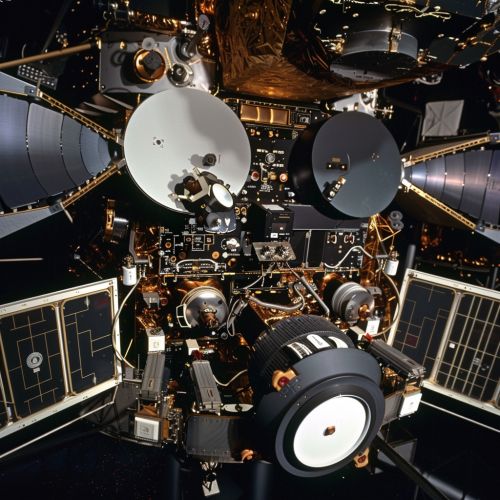Voyager 2
Introduction
The Voyager 2 is a space probe launched by NASA on August 20, 1977, to study the outer Solar System's planets and beyond. It is the only spacecraft to have visited both Uranus and Neptune, and its mission has been extended several times to study the outermost reaches of the Sun's influence and the flight path of the interstellar medium.
Design and Construction
The Voyager 2 spacecraft was designed and built by the Jet Propulsion Laboratory (JPL) in Pasadena, California. The spacecraft is a robust, three-axis stabilized platform, designed to be resilient to the harsh conditions of space. The spacecraft's power is supplied by three Radioisotope Thermoelectric Generators (RTGs), which convert the heat from decaying plutonium-238 into electrical power.


Mission
The primary mission of Voyager 2 was the exploration of Jupiter and Saturn. After making a series of discoveries there, such as active volcanoes on Jupiter's moon Io and intricacies of Saturn's rings, the mission was extended. Voyager 2 went on to explore Uranus and Neptune, and is still the only spacecraft to have visited these outer planets. The discoveries from Voyager 2 have fundamentally altered our understanding of the Solar System.
Scientific Instruments
Voyager 2 carries a suite of scientific instruments designed to study the atmosphere, space environment, magnetic field, and moons of the planets it visits. These instruments include a magnetometer, cosmic ray detector, plasma detector, and ultraviolet spectrometer among others. The data from these instruments is transmitted to Earth via a large, high-gain antenna.
Current Status and Future Plans
As of now, Voyager 2 is in its extended mission to study the outer reaches of the Solar System. The spacecraft is now in the heliosheath — the outermost layer of the heliosphere where the solar wind is slowed by the pressure of interstellar gas. Even after more than 40 years in space, Voyager 2 continues to communicate with the Deep Space Network to receive routine commands and return data. In the future, scientists plan to use Voyager 2 to study the properties of the interstellar medium.
Impact on Science and Culture
The Voyager 2 mission has had a profound impact on our understanding of the Solar System. The data it collected on the outer planets and their moons has been invaluable to scientists. Moreover, the mission has also had a significant cultural impact. The Golden Records carried by both Voyager probes contain sounds and images selected to portray the diversity of life and culture on Earth, intended for any intelligent extraterrestrial life form, or for future humans, who may find them.
